Was Richard Kirkland really risking his life for an enemy?
“It’s real easy to think that you would risk your life for a friend, but to risk your life for an enemy is something that is very rare indeed. And that, to me, is the story of Richard Kirkland.”
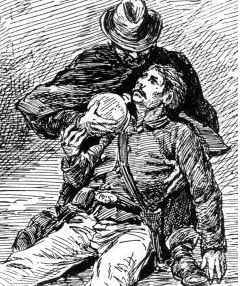 I spoke those words as the conclusion to my segment in the documentary “The Angel of Marye’s Heights.” Since then, I’ve quoted it in speeches, panel discussions and radio interviews.
I spoke those words as the conclusion to my segment in the documentary “The Angel of Marye’s Heights.” Since then, I’ve quoted it in speeches, panel discussions and radio interviews.
This is the essence of Richard Kirkland’s remarkable act and it has left an indelible impression on me. Over the last few months our team has screened this film in theaters, museums and universities. No matter what venue, the message that seems to be resonating with people is “be kind to your enemy.”
This is a difficult, if not impossible virtue to grasp. It does become more palatable however, if we re-examine the use of the term “enemy.” Were these men truly enemies and does Kirkland’s reaction to the suffering of his foes nullify the very meaning of the word when used in the context of the War Between the States? After all, just days before the onset of war, these men were citizens under the same flag, with the same God, and shared history.
It is impossible not to feel sympathy for the suffering that existed between both armies on the field at Fredericksburg. Far too often we have focused on the battle strictly in a political or tactical sense. We simply recognize both armies separately, as bitter rivals hell-bent on each other’s destruction. This is true to a point, but we cannot forget that these adversaries shared a collective existence together as countrymen, and were only enemies under their own self-inflicted circumstances.
In other words, they brought it on themselves by pursuing a military action that literally pitted brother against brother. This is what makes a “civil war” even more tragic than a traditional conflict between nations. It is also what makes the eleven doomed assaults at the stone wall even more absurd, and Richard Kirkland’s act of mercy comprehensible.
In our film storyteller Megan Hicks notes the conflicting nature of Kirkland’s actions as he was both a killer and a kind, compassionate man. During the engagement, Kirkland shot at the very men who he would later administer aide to. This conflicting-conscience goes both ways. In the same light, could the opposing soldiers on the battlefield simultaneously be Kirkland’s enemy and his countryman?
It opens up a whole new dynamic if you accept that there is no black and white in this story. This paradigm was true for the entire conflict from the first shot at Fort Sumter to the surrender at Appomattox. The line between right and wrong, friend and foe were blurred beyond comparison. Perhaps that is why the Civil War is still furiously debated to this very day.
As we prepare to acknowledge the Civil War Sesquicentennial in 2011, the practice of self-inflicted separation remains. It seems that in today’s society the word enemy is thrown around casually as the “argument itself” has become more important than the subject being argued over. Frankly, I can’t recall any other time in my life that our country’s division has been so rampant and spiteful.
We live in a nation of blue and red states and left and right politics. Each night we gather around the television to hear talk show hosts claim that the other’s opposing viewpoints have doomed us all. Americans love to fight amongst ourselves and we are nurturing a culture of enemies. Not much has changed in 150 years.
Perhaps we could learn a lesson from Richard Kirkland and rethink what it truly means to be an “enemy.” Maybe then we can learn to get along.
FEEDBACK: What is your take on this subject? Email your thoughts and I will share them in a future follow-up post.
Posted by ny5/pinstripepress
at 11:25 AM EDT
Updated: Wednesday, 13 October 2010 9:23 AM EDT
Permalink |
Share This Post
On the Radio
Yesterday Clint Ross and I appeared on Victory-FM’s “Welcome Home” show with Mark Edwards. Our interview was part of their filmmakers focus and we taped it during our recent weekend trip to Liberty University. Mark had some great questions and we are grateful for his station’s continued support. You can listen to a recording of the broadcast HERE, as well as two other segments of Clint and I HERE.
Posted by ny5/pinstripepress
at 12:00 PM EDT
Updated: Wednesday, 6 October 2010 10:29 PM EDT
Permalink |
Share This Post
Fireside Chat
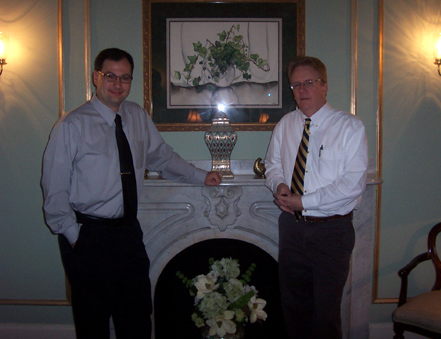
One of the personal highlights from our recent screening at Liberty University was the opportunity to hang out with my good friend Richard Williams Jr. Richard and his lovely wife joined our party on Saturday for a tour of the Civil War Chaplains Museum, a dynamite dinner at Doc’s Diner, and the event itself where he gave the invocation. They also accompanied us to services at Thomas Road Baptist Church on Sunday. I wish we had more time to chat, but both of our schedules were as usual, quite busy. A board member at the CWCM, Richard gave an excellent impromptu presentation during our museum tour on the contributions of African-American clergy during the war.The Williams also stayed with us at the Carter Glass Mansion where Richard pointed out something of particular historical significance that is often overlooked. The fireplace mantle in this photograph of us was originally located in the Nation’s second Capitol after the first was burned by the British in the War of 1812. Two of these marble mantles were acquired by Senator Glass in 1923. When Liberty University assumed control of the premises in 1977, the previous owners retained the mantles. Recently, one of these gems was returned to the mansion and installed in the dining room.
The entire Carter Glass home is decorated with a distinctive Colonial motif, which was a particular favorite subject of the late Dr. Falwell. Several of the room names echo this theme and include “The Washington,” “The Jefferson” and “The Williamsburg.” Many paintings and books on the Founders adorn every table and bookshelf and the furniture is all colonial antique. On my next stay I promise to shoot some casual video of the house and do a “Carter Glass Cribs” tour.
On a related note: Yesterday I was informed that the award-winning Free Lance-Star Town & County (of which I contributed many pieces to) is being discontinued due to budget cuts and that my favorite editor Gwen Woolf is retiring as a result. Five years ago, Gwen and the T&C gave me my first opportunity to write articles about the Civil War when all I had published to date was baseball material. Today, they are no more. As a contributor, I find this news to be disappointing. As a Fredericksburg resident and reader, I find it to be devastating. Richard Williams and I were first introduced to one another when I reviewed his book Stonewall Jackson “The Black Man’s Friend.”
Here are links to all of the articles I penned for the T&C from 2005-2010:
FEATURES:
Stonewall's Steed, Little Sorrel
Living The Cause: Lee's Lieutenants
Mort Künstler: An American Master
Mort Künstler Unveils Local Print
Human Decency During War
John Adams Elder: Fredericksburg's Civil War Artist
What Black History Month Means to Me
Honoring a Medal of Honor Winner
Angel of the Battlefield
BOOK REVIEWS:
Lost Triumph: Lee's Real Plan at Gettysburg and Why It Failed
U.S. Grant: The Making of a General, 1861-1863
To Make Men Free: A Novel of the Battle of Antietam
What Caused the Civil War? Reflections on the South and Southern History
Old Alleghany: The Life and Wars of General Ed Johnson
Reconstructed Yankee
Four Years in the Stonewall Brigade
Lincoln In Stafford
Shock Troops of the Confederacy: Sharpshooter Battalions of the ANV
No Greater Courage: A Novel of the Battle of Fredericksburg
Plenty Of Blame To Go Around: Stuart's Ride To Gettysburg
Stonewall Jackson "The Black Man's Friend"
Rush's Lancers: The Sixth Pennsylvania Cavalry in the Civil War
Stealing The General: The Great Locomotive Chase and the First Medal of Honor
Still Standing: The Stonewall Jackson Story
No Soap, No Pay, Diarrhea, Dysentery & Desertion
Andersonville To Tahiti: The Dorence Atwater Story
Sinners, Saints, Soldiers in Civil War Stafford
The Last Days of Stonewall Jackson
Posted by ny5/pinstripepress
at 11:46 AM EDT
Updated: Wednesday, 6 October 2010 10:32 PM EDT
Permalink |
Share This Post
Liberty’s Kids for kids
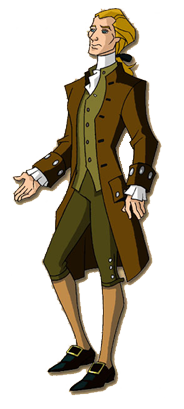 It seems that this month’s hot-button-topic across the blogosphere is the argument over teaching good and bad history to children. I have refrained from participating in any of these debates, but wholeheartedly agree that the topic deserves our attention. Education has been a primary topic of interest at our film screenings, and as a parent of four children, teaching history to youngsters is of particular interest to me. From what I see in our schools, I’m not that impressed with the manner being used to ignite an interest in our past with young people. I’ve always said that our Nation’s history is among our most precious resources, but it means nothing if we can’t relate to it and apply the lessons learned in our daily lives.
It seems that this month’s hot-button-topic across the blogosphere is the argument over teaching good and bad history to children. I have refrained from participating in any of these debates, but wholeheartedly agree that the topic deserves our attention. Education has been a primary topic of interest at our film screenings, and as a parent of four children, teaching history to youngsters is of particular interest to me. From what I see in our schools, I’m not that impressed with the manner being used to ignite an interest in our past with young people. I’ve always said that our Nation’s history is among our most precious resources, but it means nothing if we can’t relate to it and apply the lessons learned in our daily lives.
One challenge that remains in the classroom regardless of time and place is how to get kids excited about history. This obstacle is especially difficult when it comes to young children. How do we begin to capture their attention long enough to introduce them to the subject? My youngest kids have accompanied me on trips to Monticello and it was a chore to get them to recall any of the experience. On a recent Sunday morning before church, I discovered a tremendous cartoon called Liberty’s Kids. After watching a couple episodes I believe that I have found a perfect fit for introducing my youngest children to the founding of our nation. According to their website:
The primary goal of the Liberty’s Kids TV series is to provide young children with a fresh and exciting experience of the extraordinary period of 1773 to 1789 in American history. Through the eyes of two young apprentice reporters named Sarah and James, viewers of Liberty’s Kids will go on adventures in search of the real stories of the American Revolution. Although the setting is Colonial America, Liberty’s Kids’ characters find themselves in the middle of a revolution that confronts issues that still fill the newspapers today - gun control, downsizing government, lower taxes, freedom of the press, and race relations. The entire show is produced using high quality animation and creates an exciting world that today’s kids can jump into and discover the real stories of the incredible time that gave birth to the United States of America. Liberty’s Kids offers caretakers, from parents to teachers, an extraordinary resource through which they can share with young people the inspiring stories, characters, and values at the heart of America’s great experiment in democracy.
I am extremely pleased with this show, both as a historian and as a parent. I highly recommend their website which includes lesson plan material for parents and teachers, as well as full episodes and fun activities. My kids may not remember the master of Monticello, but they know this Thomas Jefferson (pictured here). It is my hope that Liberty’s Kids will be used to provide my children with an effective introduction to history that will hopefully mature as they do.
Artwork copyright 2004, DIC Entertainment.
The ugly truth
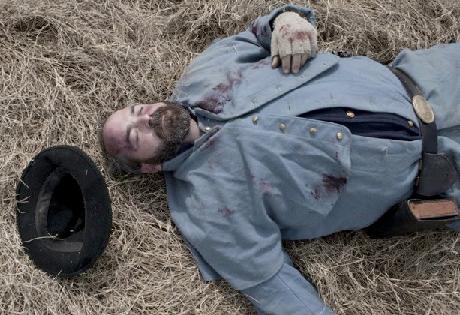
Today I finished my speech for the upcoming screening at the Stafford County Historical Society on October 21st. I was originally invited to give a presentation on Mary Ball Washington, but after several members attended our premiere in Fredericksburg, a showing of the film took precedent. Following the documentary, I will be adding remarks that tie Kirkland’s actions in with Stafford County’s experiences. In order to do that I am “adding on” the rest of the story, which is the Union army’s evacuation of their wounded and retreat across the river.
This approach takes the film’s commentary on the human tragedy of the battle and transports the suffering, off of the Fredericksburg battlefield, over into Stafford County. I also talk about the public outrage to the mass casualties and Lincoln’s reaction to it. The more I watch this film with audiences, the more I realize that we made an anti-war film. I am very pleased that our initial goal of not glorifying the Civil War came through. There is a way to pay tribute to the action of courageous men, without romanticizing the horror that they inflicted on one another.
Even the music in our film depicts the brutality of the story. The theme song to The Angel of Marye’s Heights is titled “Fredericksburg 1862” and was written and performed by Will White. A tremendous songwriter and musician, Will generously allowed us to use his music and even donated copies of his latest CD “Rise Above” for us to play and sell at our events. He is a Virginia native who now lives in Calgary, Alberta, Canada. Will’s family’s roots span the breadth of the South, and his songs reflect that heritage: bluegrass, Appalachian old-time, Delta blues, country and gospel, sung and played on 5-string banjo, acoustic and National steel slide guitars.
Will’s lyrics capture the essence of the film. Here’s the first verse:
They might have crossed the Rubicon and charged the gates of Hell
No mortal man could cross that land the Rebels raked so well
The soil was sown with flesh and bone and watered down with blood
As drops of rain they fell to stain that field of frozen mud, that field of frozen mud
You can literally ‘see’ the battlefield as depicted in his words. (Watch Will’s video under the Media tab in the Music section over on The Angel of Marye's Heights website. And visit his website at http://www.willwhitemusic.com/).
I am anxious to see if this approach is well received as far too many speakers nowadays tend to gloss over the ferocity of war. If I do this right, the audience will leave with a better sense of what Kirkland and his fallen foes experienced after the battle ended. That being death, destruction, and devastation.
Posted by ny5/pinstripepress
at 11:21 AM EDT
Updated: Wednesday, 29 September 2010 9:45 AM EDT
Permalink |
Share This Post
 I spoke those words as the conclusion to my segment in the documentary “The Angel of Marye’s Heights.” Since then, I’ve quoted it in speeches, panel discussions and radio interviews.
I spoke those words as the conclusion to my segment in the documentary “The Angel of Marye’s Heights.” Since then, I’ve quoted it in speeches, panel discussions and radio interviews. 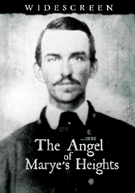
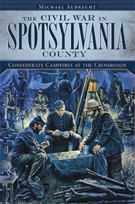
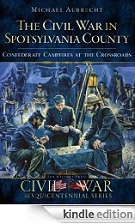

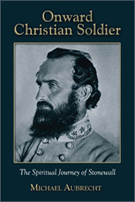


 It seems that this month’s hot-button-topic across the blogosphere is the argument over teaching good and bad history to children. I have refrained from participating in any of these debates, but wholeheartedly agree that the topic deserves our attention. Education has been a primary topic of interest at our film screenings, and as a parent of four children, teaching history to youngsters is of particular interest to me. From what I see in our schools, I’m not that impressed with the manner being used to ignite an interest in our past with young people. I’ve always said that our Nation’s history is among our most precious resources, but it means nothing if we can’t relate to it and apply the lessons learned in our daily lives.
It seems that this month’s hot-button-topic across the blogosphere is the argument over teaching good and bad history to children. I have refrained from participating in any of these debates, but wholeheartedly agree that the topic deserves our attention. Education has been a primary topic of interest at our film screenings, and as a parent of four children, teaching history to youngsters is of particular interest to me. From what I see in our schools, I’m not that impressed with the manner being used to ignite an interest in our past with young people. I’ve always said that our Nation’s history is among our most precious resources, but it means nothing if we can’t relate to it and apply the lessons learned in our daily lives.